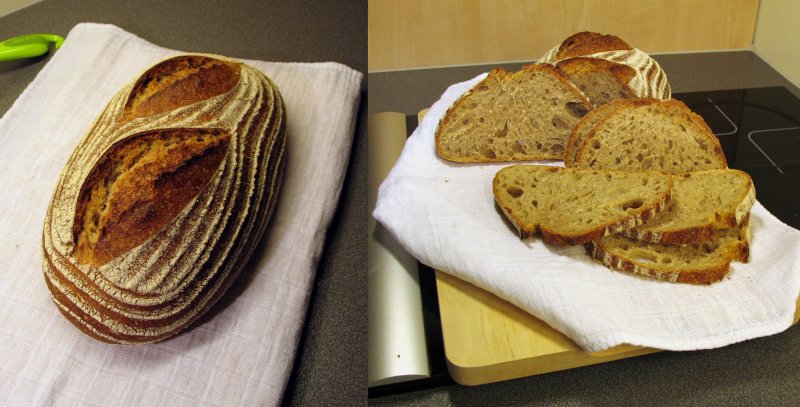66% Sourdough Rye from Jeffrey Hamelman's "Bread"
This bread is a rye with 66 percent rye flour and the remainder high-gluten flour. A rye sour is elaborated using whole rye. The sour is 80% hydration, which ends up being a very thick paste, due to how much water the whole rye absorbs. This is fermented for 14-16 hours and is then mixed with Medium rye flour, high-gluten flour, more water, salt and instant yeast.
- Log in or register to post comments
- 10 comments
- View post
- dmsnyder's Blog
